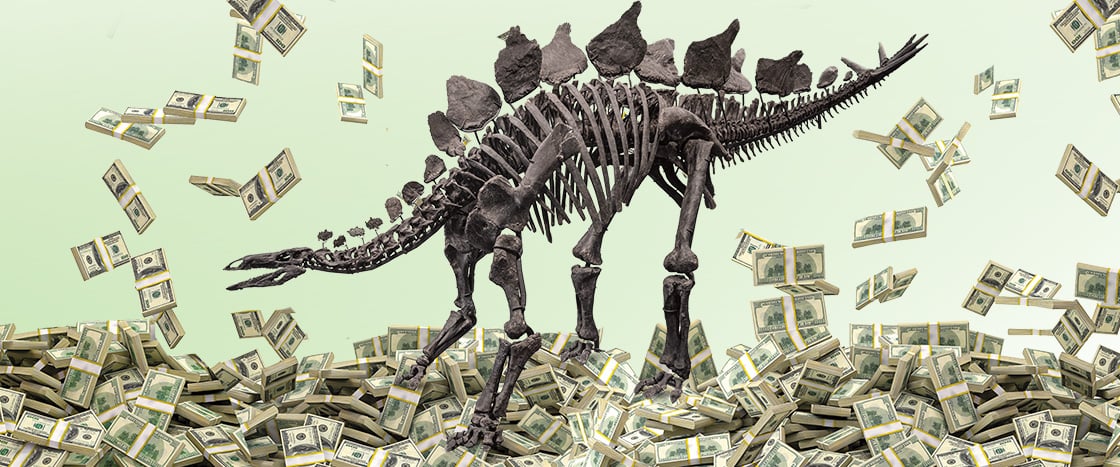Jason Cooper was walking around his Colorado property in 2022 when he spotted a round object sticking out from a wall of rocks. It was the thigh bone of a Stegosaurus! Nearby were some ribs and two of the dinosaur’s spiky back plates. Cooper is a professional fossil hunter. He and his team eventually found and dug up 254 of the dinosaur’s original 319 bones.
The massive fossil, nicknamed Apex, is one of the most complete Stegosaurus skeletons ever discovered! Scientists are eager to study it so they can find clues about how the dino lived 150 million years ago. But Cooper didn’t donate Apex to a museum or a university. Instead, he sold it to a wealthy collector in 2024 for $44.6 million. That price tag made Apex the most expensive fossil ever sold!
This sale got a lot of attention. Some scientists think it shouldn’t have happened at all. Such high prices make it harder for museums to get fossils to display and study. Should these clues to the past belong to the public? Or should people be able to buy and keep the fossils for themselves?
Jason Cooper went for a walk in 2022. He spotted a round object on his Colorado property. It stuck out from a wall of rocks. The object was the thigh bone of a Stegosaurus! Some ribs were nearby. So were two of the dinosaur’s spiky back plates. Cooper is a professional fossil hunter. He dug up more of the dinosaur’s bones. It had 319 bones to begin with. Cooper and his team found 254 of them.
The huge fossil is nicknamed Apex. It’s one of the most complete Stegosaurus skeletons ever found! The dinosaur lived 150 million years ago. Scientists want to study the fossil. They hope to learn about the dino’s life. But Cooper didn’t donate Apex to a museum or a university. Instead, he sold it. In 2024, a wealthy collector paid $44.6 million for Apex. It was the most expensive fossil ever sold!
This sale got much attention. Some scientists aren’t happy about it. Museums want to display and study fossils. But such high prices make it harder to get them. Fossils are clues to the past. Should they belong to the public? Or should people get to buy and keep them?

